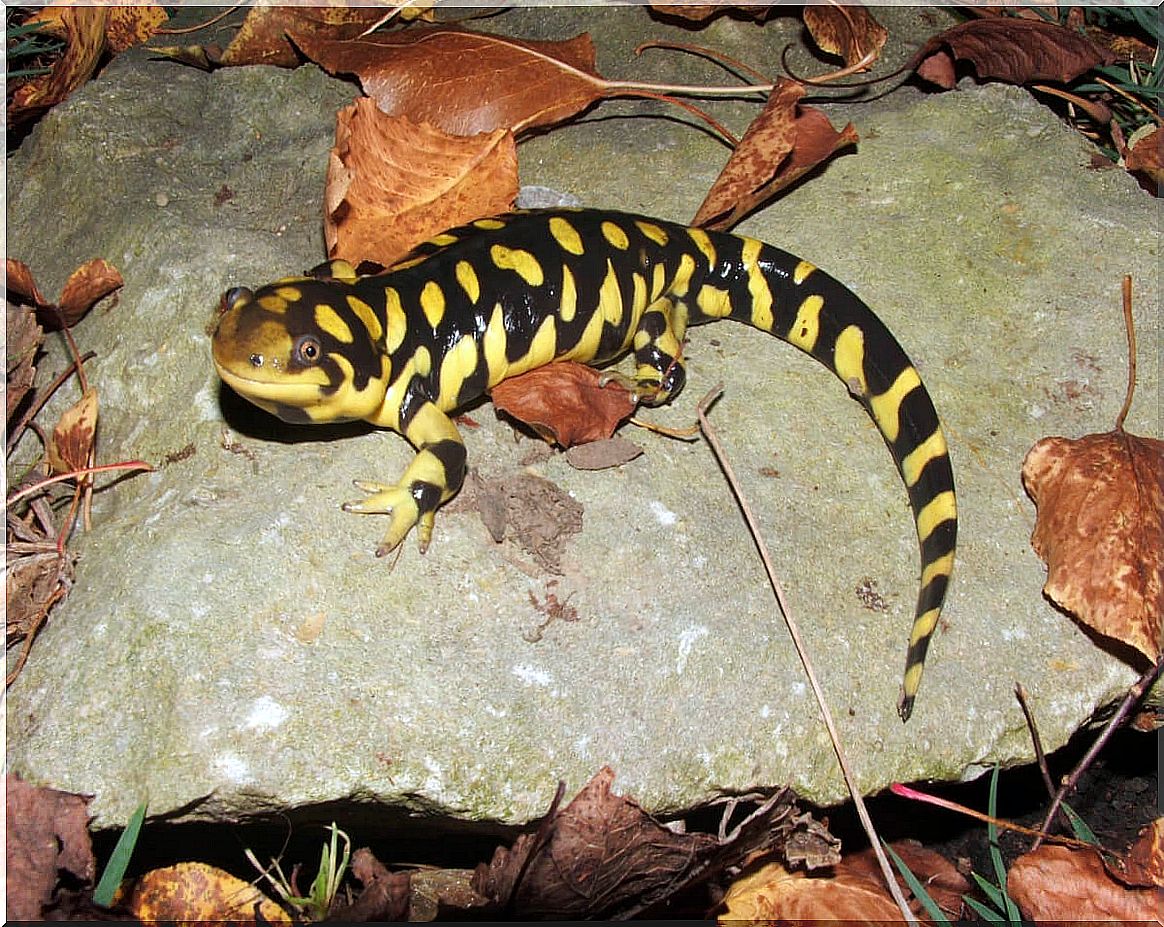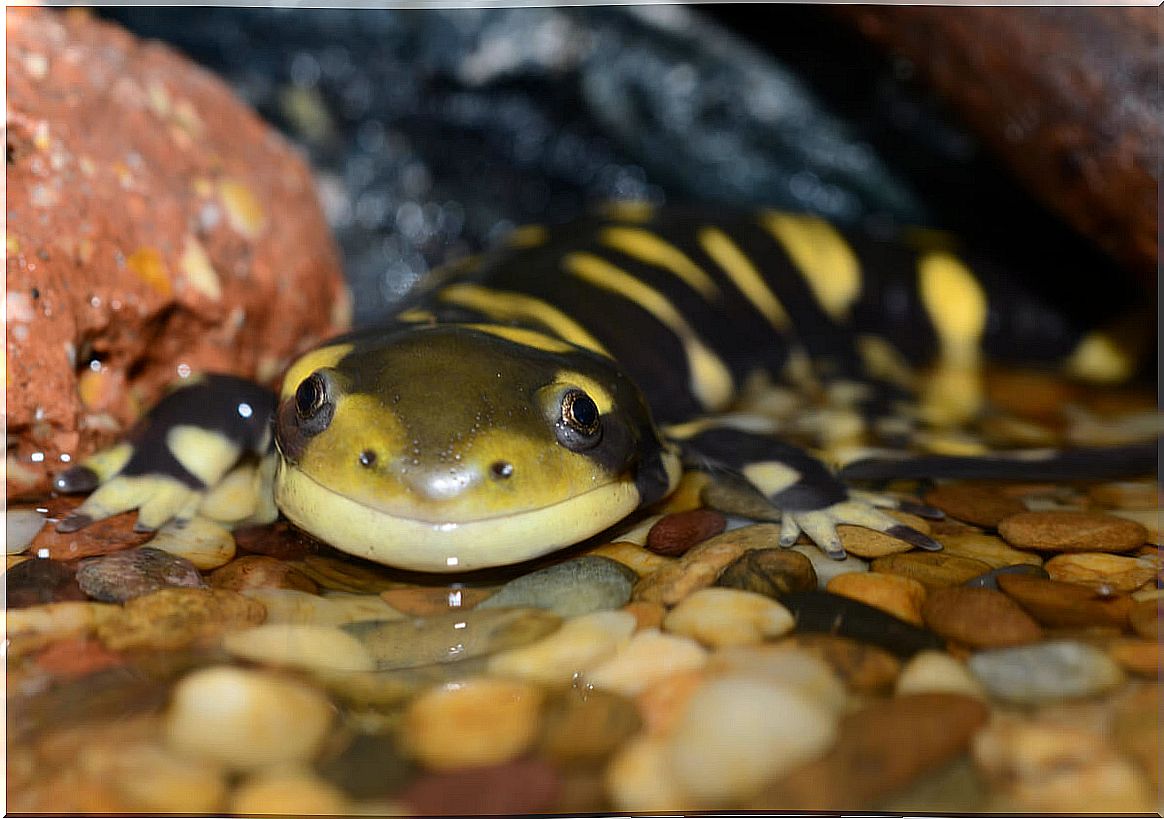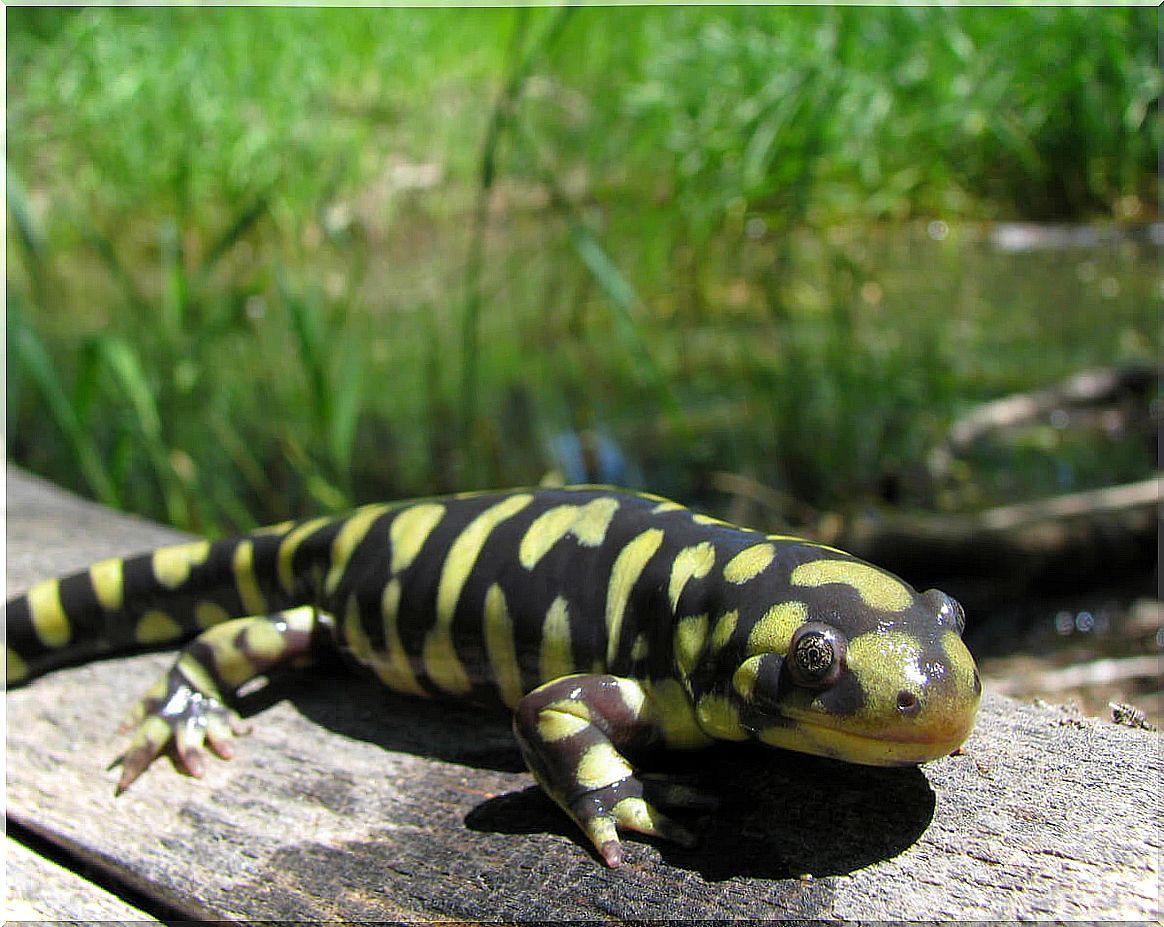Tiger Salamander: Captive Care And Legal Considerations

Today we introduce you to an exotic pet that is little known to the general population: the tiger salamander. Despite its little fame and the lack of information about this animal in specialized portals, we assure you that this amphibian is a resistant, friendly and excellent pet for inexperienced tutors in the field of terrariofilia.
Despite the resistance of this animal, there are certain requirements to take into account before its acquisition, especially in legal matters. If you are thinking of getting a tiger salamander, don’t miss this guide.
Initial considerations
First of all, we must recognize that we are not talking about a single species when we refer to the tiger salamander. All these domestic urodelos belong to the genus Ambystoma – just like the axolotl – but it contains a whopping 32 different species.
The species that concerns us today is generally known under the scientific name Ambystoma tigrinum. Even so, various studies have considered that the subspecies of tiger salamander A. mavortium is actually a different species, so the scientific name of the animal for sale may vary.
In turn, Ambystoma mavortium also has several subspecies, which are practically indistinguishable to the inexperienced human eye. In summary, be that as it may, the phylogenetic conglomerate will not affect the time of caring for these animals in captivity.
What is important to keep in mind is that this species is protected in different states of the US In some regions its possession is controlled, so it is necessary that the guardian is informed of the legal status of his potential pet before acquire it.

Tiger salamander care in captivity
Both Ambystoma tigrinum and Ambystoma mavortium reside in western regions in Canada and the United States, so their requirements are based on temperate climatic parameters, as opposed to the tropical environmental needs of many other exotic species.
Terrarium
The tiger salamander is one of the easiest amphibian species to keep, as its terrarium can be entirely terrestrial. Even so, its measurements must be considerable: about 40 liters in volume, approximately 60 centimeters long by 40 wide – at least – for a couple of copies.
We must bear in mind that this species reaches 20 centimeters in length without problem. For this reason, giving space to adult individuals is essential for their well-being, even though it is not a species with a very marked rate of activity.
The substrate of the terrarium must simulate a natural ecosystem, as environmental enrichment is essential for exotic pets. Coconut coir and Sphagnum moss are ideal for the species, as they can be found in any exotic pet store and retain moisture very well.
This salamander likes to bury itself, so you have to place about 10 centimeters of substrate in the tank. In addition, it will be necessary to give the animals certain nooks in the form of branches, stones and holes. Unfortunately, having plants in the terrarium is a bit incompatible with this salamander, as it can dig them up from the substrate easily.
Finally, it is also necessary to emphasize that the tiger salamander requires a constant source of water for bathing if desired. To do this, you can place a dish with water, shallow and easy to access and exit.
Environmental requirements
Here are the environmental parameters necessary for the tiger salamander to survive in captivity:
- A temperature of 10 degrees 24 degrees is ideal. This amphibian does not require any type of external heat source for its well-being.
- Relative humidity around 70%. This is achieved by spraying the terrarium with water at least once a day. The substrate should always be damp, but not soggy.
- Good ventilation. The glass terrariums prepared for amphibians have metal grids, which prevent the air from being stagnant in the installation. This prevents the growth of fungus and mold.
Feeding
Luckily, we are facing a species that devours practically everything that happens in front of it. The tiger salamander feeds on insects, worms, earthworms, small fish, and even shrimp and other crustaceans. Each specimen should be fed one to three times a week, but be careful: these animals tend to be obese.

A good pet with reservations
Unfortunately, captive breeding of this amphibian is complex. The tiger salamander is protected in various states of the USA since, due to this, some sellers choose to directly take the animals from their natural environment and sell them.
For this reason, it is essential to ensure that any exotic animals to be acquired come from a hatchery. An official document that proves it can always be required and, thus, the guardian will be protected by the law and will not be promoting the depletion of wild species.









